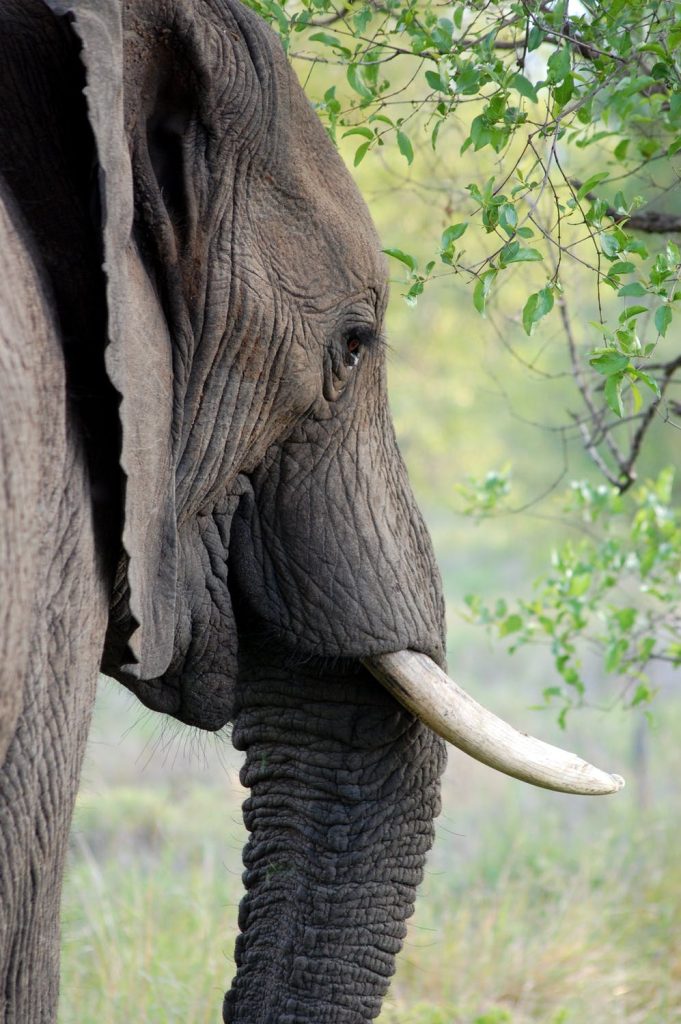De Beers Group is collaborating on a multi-year, multi-elephant conservation project that is exactly the feelgood story the jewellery industry (and your news feed) needs right now.
In 2018, Venetia Limpopo Nature Reserve (VLNR), managed by De Beers Group and adjacent to their Venetia diamond mine in South Africa, had an elephant problem. The 32,000 hectare reserve has a carrying capacity of 60 elephants, which means that the environment there can sustain 60 elephants before they begin damaging the ecosystem and threatening other species. In 2018, the reserve had 270 elephants.
By contrast, Zinave National Park in neighbouring Mozambique with 400,000 hectares of protected reservation land, had only 8 elephants. Mozambique is trying to rewild its parks and reserves after a devastating civil war between 1977 and 1992 that seriously affected the country’s human population as well as countless elephants and other animals.
The Moving Giants project is a collaboration between De Beers, the governments of South Africa and Mozambique, NGOs, private donors and animal conservation organisations. A multi-year project, the aim is to “re-wild”, or translocate, 200+ elephants across Africa, returning them to native habitats and restoring balance across ecosystems. Moving 200 mammoth creatures more than 1700kms across a continent is an enormous undertaking. The stories along the way are heartwarming and astonishing, and full of hope.

The translocations are hugely expensive, with the cost of helicopters, huge trucks and large crews to cover. They also require extensive planning. The first phase, which saw 20 elephants undertake the 54 hour journey, took eight months to prepare.
On top of funding the translocation, De Beers Group is donating US$500,000 (via the Anglo American Foundation) over five years to Peace Parks Foundation, which co-manages Zinave with the Mozambique Government, to bolster anti-poaching measures. The park already has a new digital radio system in place to enable communication across the territory and to link into a new Anti-Poaching Operations Control room.
It’s not just the elephants that will benefit from the translocation. The re-wilded Zinave will bring in tourists, and the communities around the park will benefit from 20 per cent of the revenue the park generates; also, some of the local people are being trained as rangers.
Giant-moving specialists Conservation Solutions, co-founded by translocation expert Kester Vickery, and conservationists at De Beers Group are working together bringing “cutting edge conservation” to the longest elephant translocation ever undertaken in South Africa. The journeys are documented on the Moving Giants website in a series of blogs, articles and videos. In one video, Kester Vickery says: “Corporate responsibility is the future of conservation…and I feel De Beers is really stepping up to the plate in doing this.”
New technology and new conservation theory is being bought into play in this project. Even just a decade ago, it was considered too difficult to move adult elephants—the older elephants were culled and only the young orphaned elephants were moved. But elephant society relies heavily on manners and order—respect and standards of behaviour are taught to young elephants by older family members. Previous projects involving translocated orphaned elephants have not fared well. In South Africa’s Pilanesbery National Park, a group of young elephants moved in the 1990s became known as “the Delinquents”. In a testosterone-fuelled rampage, the elephants aggressively attacked rangers, visitors and even started killing rhinos for sport!
The new theory behind translocation is to identify entire breeding herds, and move them together, as a family. Not only does this allow for the translocated animals to benefit from social cohesion, it also relaxes the elephants in transport by keeping the family units together. And it seems like the right thing to do.
But moving an entire breeding herd as opposed to a few young calves is an extremely complex operation that involves precision planning, a large ground crew (including multiple veterinarians to monitor the elephants’ well-being), and a wide array of vehicles: recovery vehicles, transport trucks, and a helicopter. And those complexities are not without risks to both the elephants and the translocation crew.
By October 2019, De Beers Group was pleased to report that the 101 elephants moved so far to Mozambique appear to be settling in well and enjoying their new environment. Being a keystone species, the park there is also starting to see other improvements made possible by the presence of the elephants, and other species, such as sable, oribi and eland are being re-wilded back into the park. Moving Giants is a positive environmental story that is protecting and enhancing two ecosystems across two countries—and one that swells the heart.
If you need a dose of cuteness, wonder, inspiration and hope during lockdown, spend some time at www.movinggiants.org or follow @movinggiants on Instagram. The baby elephant videos will melt you.